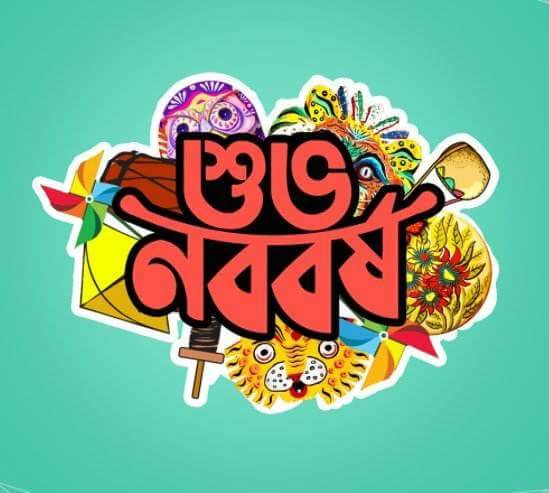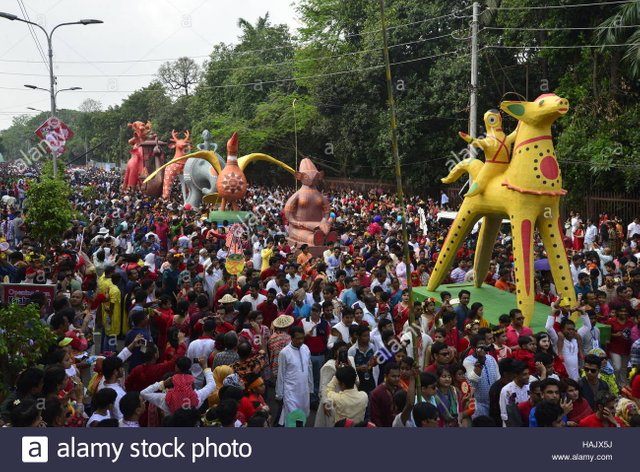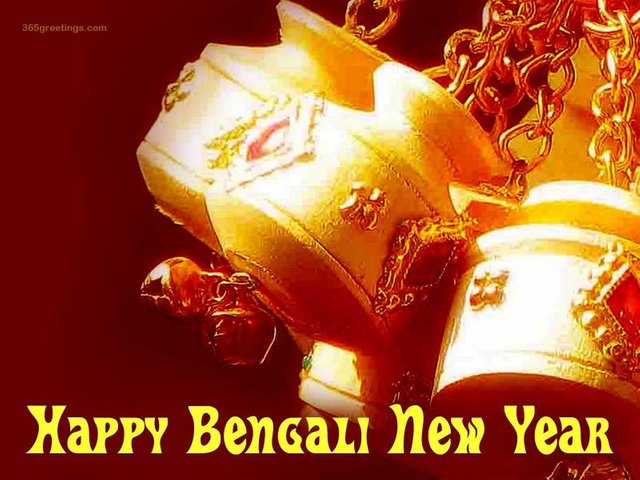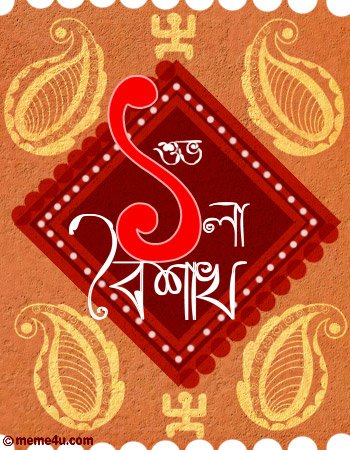Most probably the celebration of the Bengali New Year is connected with the Bengali year. In Bengal, Emperor Akbar started the Bengali calendar-year on 10 March, 1585, but it became effective from 16 March, 1586 the day of his ascension to the throne. The basis of the Bengali year is the Hejiri lunar year [Muslim era counted from the year of Muhammad’s (SM) going to Medina in 622 AD] and the Bengali solar year. The Bengali year was accepted even at the grass root level. A possible reason for this may be that the basis of the Bengali year is agriculture and the beginning of the Bengali year is a time of collection of taxes from the farmers. For instance, the farmer does not plough the field even if it rains in Chaitra (the last month of the Bengali year and corresponding to mid-march to Mid-April. The fields are generally ploughed in the month of Baisakh (April-May) and the prayer for the rains is also because of this. However, the common man still refers to the Bengali calendar of his day to day activities and the city-dwellers to the Julian calendar. In this context, Shamsuzzaman Khan has rightly remarked that Akbar had once started the pan-Indian Islamic year as well as the Bengali year. “The introduction of Bengali year had not only survived but at one time had also given the unique power of nationalistic feelings and pride to the separated and divided mainly joint Bengali society.”

The New Year begins in different seasons in different countries of the world. The Bengali New Year is in summer. Summer is not a pleasant time in Bangladesh. Festivals and merriments are not as much possible in summer as during the beginning of winter or spring.

Many people believe that the Bengali New Year should have begun in the month of Agrahayan (the eighth month of the Bengali year and corresponds to Mid-November to Mid-December) even considering from the point of agriculture as Agrahayan is, for instance, the month of reaping. Yet New Year is celebrated in Baisakh. Pallab Sengupta writes: “The New Year is calculated either from Hemanta or late autumn (between autumn and winter) or spring that is from the time when new crops, flowers and fruits start growing. This, at least, was the custom initially. Later, with the passage of time, it shifted to other seasons due to practical necessities. The custom of beginning the year from January 1 or Baisakh 1 is thus quite foolish.”

But that mystery has not been unraveled. As our country is located in the Tropics the importance of summer in this region is natural. Moreover, the drying up of the canals, rivers and streams at that time and the acute crisis for water makes the tremendous changes in season easily felt. And then comes the Nor’westers like wild buffaloes throwing everything in complete disorder. The rains start immediately lowering the temperature and making the conditions favourable for ploughing.

Hi! I am a robot. I just upvoted you! I found similar content that readers might be interested in:
http://www.bengalics.org/the-history-of-the-bengali-new-year/
Downvoting a post can decrease pending rewards and make it less visible. Common reasons:
Submit
Congratulations @muktadir! You have completed some achievement on Steemit and have been rewarded with new badge(s) :
Click on any badge to view your own Board of Honor on SteemitBoard.
For more information about SteemitBoard, click here
If you no longer want to receive notifications, reply to this comment with the word
STOPDownvoting a post can decrease pending rewards and make it less visible. Common reasons:
Submit
Thanks for your important post. Bangali Happy new year. Let's have a nice new year.
Downvoting a post can decrease pending rewards and make it less visible. Common reasons:
Submit
Pohela boishak is our celebration of hearts. Thank you brother for your post...
Downvoting a post can decrease pending rewards and make it less visible. Common reasons:
Submit
happy new year 1425.. in that day ur concept is fantastic... bangalis enjoy that day very much..
Downvoting a post can decrease pending rewards and make it less visible. Common reasons:
Submit